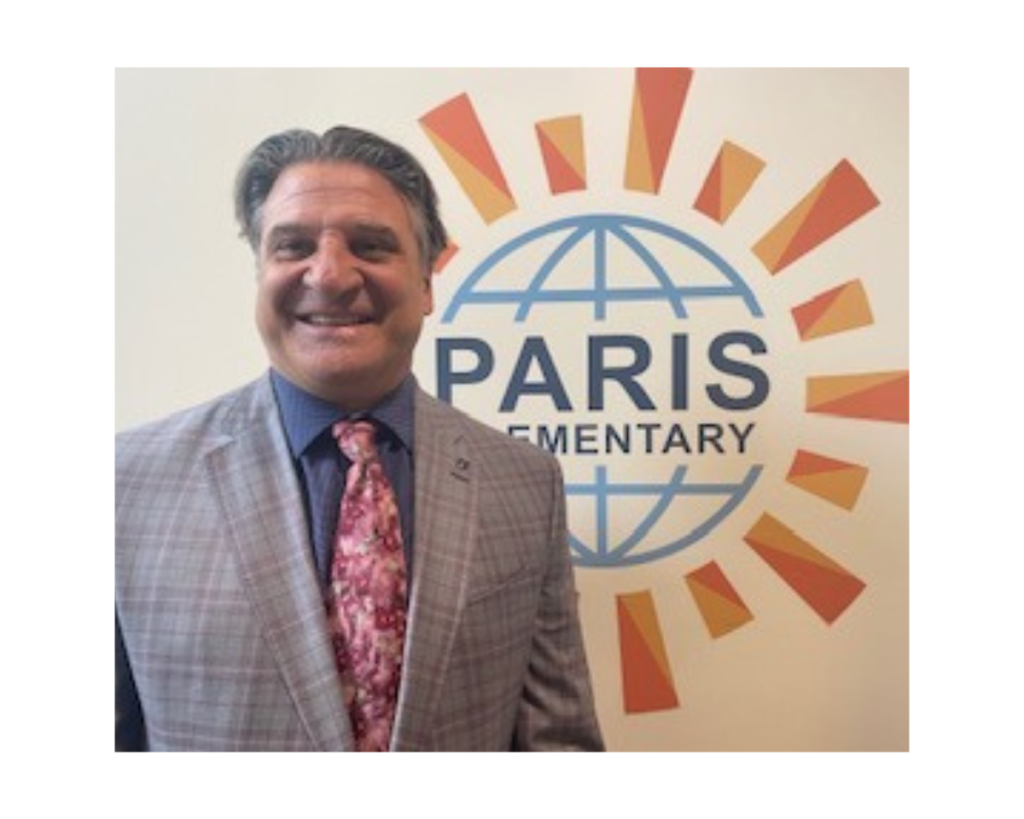Editor’s note: This article was written by Mario Giardiello, a long-time Denver-area educator. He is currently the principal at Paris Elementary School in Aurora Public Schools. Giardiello most recently was the Director of Innovation Schools in APS but took over at Paris, an APS Innovative School, once he found out it was slated for closure.
It was early in the process of learning our school – Aurora’s Paris Elementary – was closing next spring when our Family Liaison said matter of factly, “The closing is just a small part of our story. There are many more openings in store for our community.”
This started us on the path of leading with dignity and possibilities. We were no longer going to be victims of a decision to close our school. It would be the beginning of renewed agency for our community.
As the principal, I needed to help the community transition from advocating for their school to stay open to being a leader that supported the many decisions families and staff had to make for themselves.
An unfortunate trend across the country is closing schools for a variety of reasons. Schools are closing because of enrollment decline, shifting populations, declining birth rates, lower performance, and the consolidation of schools to address budget shortfalls.
It has become a strategy for districts to cut costs, eliminate poor-performing schools and teachers, and move back to larger, community schools.
From New York to Los Angeles, the trend is clear: Students have left the building. Cleveland, Chicago, Baltimore, Denver and others are seeing their lowest enrollment trends in decades. No matter how commonplace it becomes, every school closure creates trauma for its community but can be mitigated through courageous leadership.
How we lead through our school closing will either increase or decrease that stress for all stakeholders including our staff, families, and most importantly, our students. As leaders of our schools and our communities we must strongly advocate to keep our schools open.
We know that our schools are the central hub of connectedness for our communities and it is our responsibility to protect that. Often, we are the place where families gather for social activism, getting basic needs met, parent/adult education, and after school programs for kids. We are not just schools or daycare centers, but community hubs.
We must do whatever possible to keep our doors open to our communities.
However, once the good fight is finished and the final decision is made that your school is closing, it is time to shift into being a leader that helps your school close with dignity.
Your community and students need you to lead through this transition with dignity and focus. The focus must be on helping all stakeholders, including families, staff and students to transition well. Your new primary job is to help your community understand that they still have agency and that their voice is as important as ever.
As leaders of a school and a community that is going through this transition, you must control the narrative. There will be members who want to keep fighting even though the decision has been made. This does not benefit anyone, especially the kids.
You have to help those folks understand what needs to happen to support the students now. Continuing the conversation about why we shouldn’t be closing only continues and perhaps increases the stress for students and staff, when empowering them to understand their current choices should be your focus. Helping our staff, families and students understand their choices is an important step in empowering stakeholders to take control of their lives and community.
Supporting our teachers and staff with dignity
Do not underestimate the strain this experience will put on your staff. The end of the year will be filled with teachers scrambling to find new jobs, which will entail offering them grace as they take days to interview and prepare for getting their new jobs. The vulnerability increases for many as their colleagues secure jobs before them and they start seeing other schools closing, further increasing the competition.
Our mantra for this year’s professional learning has been “no new initiatives.” A message to teachers to help them make the decision to stay through our last year was that we will focus on our students and their families. No long-term planning or multi-year School Improvement Plans were necessary. This was attractive to our staff, and we only lost three teachers before our last year started.
So, temper the “no new initiatives” with the understanding that we will still be growing and learning together, but the pressure of a multi-year plan will be minimized. We still have students in front of us who deserve the best care and instruction that we can provide. Our first priority is to our current students who need us to be at our best.
We redefined some of our professional learning together to focus on our own marketability. My goal is that all teachers will secure a job by the end of March. This includes time to develop and get feedback on resumes, cover letters, interviewing skills, developing teaching videos, data brag sheets, and other artifacts. .
There should also be a clear message to current staff about how much they are appreciated and that the district and school leadership will do everything in their power to support them in finding their new “home” school. A leader needs to urge senior district staff to be present at their school, giving this same message.
We can’t guarantee staff a job for the following year, but these teachers should be valued for staying and supporting their students and families through an extremely difficult year. They have been loyal and we need to do whatever we can to ensure they land well for the next school year.
Supporting our families with dignity
There is great distrust among community members and families toward the district once the decision to close their school is made.There is a fine line for leaders to walk between supporting the district decisions and supporting families and students.
These two support structures do not need to be mutually exclusive.The best thing a leader of a closing school can do for his/her families is to help them move on from the decision that was made and to help them understand that they still have agency when it comes to their families’ educational needs.
Consistent, transparent, and honest feedback is crucial. Keeping your families informed of all new decisions and meetings to come is an important step in building that trust. Families lose agency once their school is closed. They may feel like this is just one more example of poor communities of color being left behind.
Our leadership must help our communities shift their beliefs if they are dwelling on the decision. We cannot encourage worrying about decisions made that we cannot do anything about. We must help them see that there is much good work to be done for the benefit of their families and community including safe transportation, ensuring small class sizes, understanding educational programming and logistical systems like drop-off and pick-up protocols.
In some ways, the community voice is even more important once the decision to close a school is made. There is much to advocate for and a leader can help manage the narrative to help a community focus on what we can control.
Supporting our students with dignity
There are opportunities for students to get involved with the fight against their school closing. The voices of our children are the most compelling as they share with the media, school board members, and others why their school should remain open.
It is a great opportunity for their leadership voice to be nurtured and respected. It’s more important than ever to listen to our students throughout this process.
We often hear from students that their greatest concern is being afraid of their new school. Will their teachers love them as much as their current ones? Will they feel at home? Will their friends be at their new school? They should be able to vent and ask questions, but at the same time they should be supported to move on to taking control of their future and their educational goals.
Spending too much time in class talking about how awful that our school is closing is disempowering. It’s far better to spend time talking about the opportunities that await them. The new friends and experiences that they will encounter. Life is uncertain but every closed door brings opportunities. These are great life lessons.
There are so many more school choices today than there were just a couple of decades ago. Students and families should be empowered to explore and research all available schools including charter schools, district-community schools, online schools, and their new boundary school.The more choice students have the more ownership they will employ and we can help them and their families explore these choices.
A leader’s role
There is so much a leader needs to learn about this new role. For me, having a coach who was a principal of a closing school was invaluable. He helped me to understand that there could be opportunities for inspiration and agency and that my leadership could decrease the stress that all stakeholders experience though such a transition.
Most districts will rewrite the boundaries so all students will have a home. This is where parents and students should start. We can help them direct their voices and help ensure they are cared for in the process. As leaders, we can organize field trips for all stakeholders to the new boundary school.
This can include separate family and teacher coffees with the new principal; school tours for students; visiting during drop-off and pick-up; combining after-school club opportunities. .
Leaders can also arrange meetings with the new Principal so families can understand the educational programming and how the school promotes positive climate and culture. The two schools can join forces with joint PTA meetings, spaghetti dinners, play groups at the playground, or even field trips together in the spring.
Closing schools is not a new phenomenon, but as I said earlier, it is a growing national reality exacerbated by new budget and enrollment trends. Leaders are often left on their own to navigate the complexities of supporting all stakeholders through the painful process.
School leaders going through closure need a coach or district support to guide them through these stressful times for their community. And they need to understand the different leadership needs at various stages of the closure process.
This begins with managing through the initial bad news of their school closing and culminates with ensuring agency for students, families, and staff as they find their new “home” schools.




